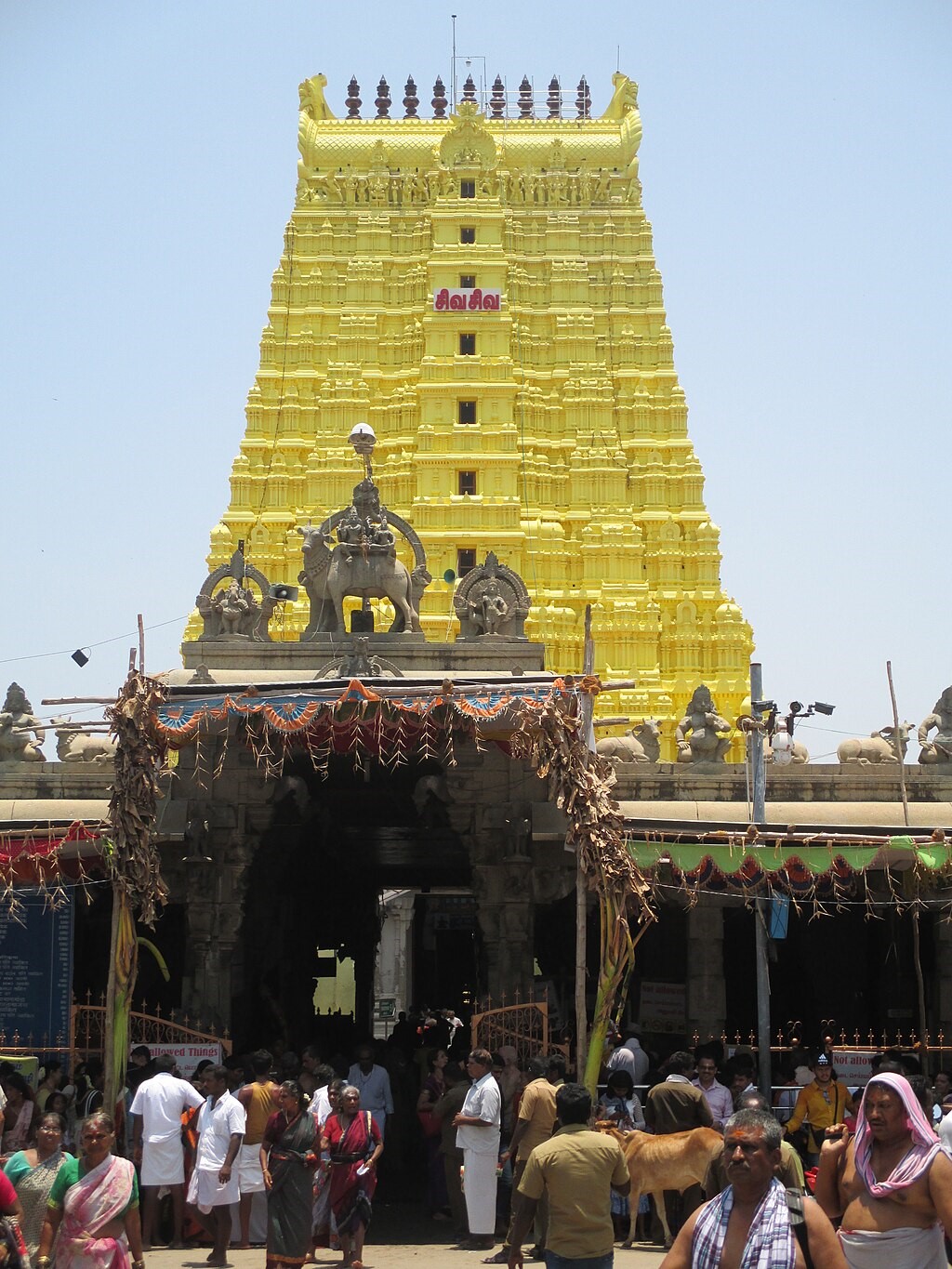Description

Disclaimer: Copyright infringement not intended.
Context
PM prays at Arulmigu Ramanathaswamy Temple in Tamil Nadu.
Details
- Located on Rameswaram island, Tamil Nadu, the Ramanathaswamy Temple is a Hindu pilgrimage site and one of the twelve Jyotirlinga temples.
- Its sacredness is attributed to its association with Lord Rama, the seventh avatar of Vishnu, as described in the epic Ramayana.
Historical and Mythological Significance
- Ramayana Connection: According to Hindu mythology, Rama, along with Sita and Lakshmana, prayed to Shiva here after the battle with the demon-king Ravana in Sri Lanka.
- Atonement Ritual: Rama worshipped the Shiva Lingam to expiate the sin of Brahmahatya (killing a Brahmin, Ravana).
- Hanuman's Role: Hanuman, Rama's trusted lieutenant, was tasked with bringing a Lingam from the Himalayas. Due to delays, Sita crafted a Lingam from sand, now known as Ramalingam.
- Vishvalingam: The Lingam brought by Hanuman is called Vishvalingam and is also worshipped.
History of Construction
- Expansion by Pandya Dynasty: The temple was expanded during the 12th century under the patronage of the Pandya Dynasty.
- Renovations: Major renovations were undertaken by Jeyaveera Cinkaiariyan and Gunaveera Cinkaiariyan, rulers of the Jaffna kingdom, during the 17th century.

Architecture
- Compound Wall: The temple is enclosed by a high compound wall on all sides, with towers (Gopurams) in the east and west, and finished gate towers in the north and south.
- Long Corridors: It boasts strikingly long corridors, with the outer set considered one of the longest in the world.
- Shrines: Dedicated shrines for Ramanathaswamy, Parvathavardhini, Vishalakshi, and others are present.
- Unique Structures: Notable structures include Chokkattan Mandapam and the main eastern Gopuram.
Temple Tanks (Tirthas)
- Agni Theertham: The primary sea shore associated with the temple, representing the Bay of Bengal.
- Sixty-four Tirthas: There are sixty-four holy water bodies in and around Rameswaram, with bathing in them considered a significant aspect of pilgrimage.
Modern Significance
- Char Dham Status: The temple is part of the Char Dham pilgrimage, signifying its importance in Hindu spirituality.
- Jyotirlinga: Ramanathaswamy Temple is revered as one of the twelve Jyotirlinga, symbolizing the infinite nature of Shiva.
Recent Recognitions
- UNESCO Award: In 2017, the temple won the UNESCO Asia Pacific Award of Merit for cultural heritage conservation.

Conclusion
The Ramanathaswamy Temple, with its deep-rooted mythology, intricate architecture, and ongoing spiritual significance, stands as a testament to the enduring cultural and religious heritage of India.
|
PRACTICE QUESTION
Q. Which of the following statements about the Ramanathaswamy Temple is correct?
A. It is one of the twelve Dwarka temples.
B. The temple was built in its current form during the 17th century.
C. The Lingam of Ramanathaswamy was established by Rama after his war against the demon-king Ravana.
D. The temple is primarily associated with the Char Dham pilgrimage in the Himalayas.
Answer: B
|







